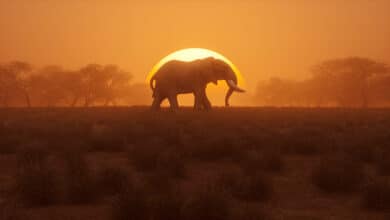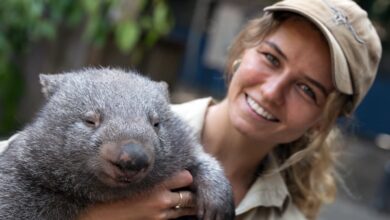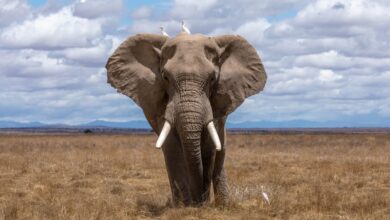The Japanese Macaque
The Japanese Macaque is a medium-sized monkey found in a wide range of environments across Japan. The Japanese Macaque is also known as the Snow Monkey because it is commonly found in the country’s colder regions, where heavy snowfall frequently occurs throughout the winter. They are the world’s most northern extant monkey species, and they have adapted to their environment and shifting seasons in remarkable ways.
The Japanese Macaque is divided into two subspecies, one of which is distributed throughout northern and mainland Japan, and the other is restricted to one of the country’s southern islands. The size and appearance of the two are remarkably similar.
Anatomy and Appearance
The Japanese Macaque has a stocky body and reddish face that is thought to be human-like. The Japanese Macaque’s thick, fuzzy coat is usually grey or brown, with a slight speckled pattern, and thickens throughout the winter to keep them warm in frigid temperatures.
Like other Monkey species, the Japanese Macaque has opposable thumbs that allow it to grip and hold objects, and it can only walk on its rear legs when it contains something in its hands. In addition, the Japanese Macaque possesses huge pouches in its cheeks that allow it to store food while foraging.
Distribution and Habitat
The Japanese Macaque may be found in four different regions of Japan, in various habitats ranging from subtropical jungles to hot mountain springs, forested hills, highlands, and high mountains. Japanese Macaques in the northern and central portions of the country face seasonal fluctuations. Temperatures range from 15 degrees Celsius in the winter to more than 23 degrees Celsius in the summer.
The Japanese Macaques reside in tropical broad-leaf woods that are less affected by seasonal fluctuation in their southern habitat on the island of Yaku-Shima. The Japanese Macaques are found in the mountains of central Japan, where they warm themselves in hot springs produced by adjacent volcanoes.
Behavior and Lifestyle
Female Japanese Macaques reach sexual maturity between four and five, about a year earlier than males. The female Japanese Macaque typically picks her partner based on his rank, and after a 6-month gestation period, she gives birth to a single infant.
Baby Japanese Macaques are highly reliant on their mothers and cling to her throughout the first few years of their lives, resulting in a strong attachment between mother and child. Males frequently leave the tribe after weaning and spend their lives traveling amongst others, whilst females usually stay in the same troop they were born in. Japanese macaques live for long life, frequently reaching the age of 30 years or more.
Diet and Prey
The Japanese Macaque is an omnivore mammal, which means it eats both plants and smaller animals. Because Japanese Macaques are largely ground-dwelling, unlike many other Monkey species, they do most of their foraging on the ground.
Fruits, berries, seeds, young leaves, and flowers are the primary foods they eat, which they take from the surrounding plants and store in their cheek pouches to gather more. Crabs, insects, and bird eggs are also used to boost their nutrition, especially during the colder winter months when there is a lack of food on the branches. Japanese Macaque newborns are breastfed until they are old enough to start eating solid meals.
Predators and Threats
Except for the occasional hungry Wolf or Feral Dog, the Japanese Macaque has no actual predators in its natural environment due to its relatively enormous size and broad geographical ranges. The Japanese Macaque is threatened mainly by humans, as they are frequently killed by farmers when they approach livestock or crops.
The only cause for these conflicts is that the Japanese Macaque is being pushed into smaller and smaller areas of its native ranges due to deforestation and the expansion of human settlements. Individual Japanese Macaques in the north are known to sleep in deciduous trees during the colder winter months to avoid being covered in considerable amounts of snow during the night.
Relationship with Humans
Like many of Japan’s 22 monkey species, the Japanese Macaque is frequently adored and safeguarded by the locals. However, as human populations expand and land is cleared for logging and agriculture, Japanese Macaques have lost enormous swaths of their natural habitats, forcing them to approach fields in search of better food.
Despite being a protected species in Japan, it is estimated that over 5,000 Japanese Macaques are slaughtered each year by farmers who claim to be safeguarding their cattle and crops. The Japanese Macaques that bathe in the hot springs in the Nagano Mountains in central Japan have become one of the country’s most popular tourist attractions.





